Industrial Customer Specific Digital Video Recorders (Custom DVR)

skoopia has expanded its team, offering not just regular, but also custom build recording solutions. These so called DVR (Digital Video Recorders) or NVR* (Network Video Recorders) can be fully customized.
Integrate unique features such as overlays, direct button control or wireless FTP, design for fit (e.g. size) as well as API/SDK requirements with your existing solution environment can be accompanied.
At all times, skoopia DVRs are designed to maximize productivity of operators, while remaining easy and straightforward to use. Yet, it provides you as OEM control over the platform, from user access and function per user to OEM look and feel (from color setting till specific button based icons and/or start up screen).
Why choose a DVR over a PC-based grabber card?
Independent of the fast changing pace of computer hardware
More affordable, certainly if the computer hardware price is included
Clear cut between direct action (video recording) and aftermaths (video reporting) &
Customization capability (at least by skoopia) on an identical platform
Custom DVR / Customized Digital Video recorder

Video Input Signal
EX-SDI, HD-SDI, AHD, TVI and/or CVBS can be integrated in a single DVR with auto-recognition of the incoming signal
For the analog signals (AHD/TVI/CVBS) balance video input is possible as well (V+ / V-), particularly suitable for environments with sizeable electro-magnetic influences (e.g. having neighboring high current appliances/motors).
Video Loop Through
Loop through input can be established for customers demanding even lower latency for direct operator view and in-parallel recording
Video Input Connectors
BNC, MMCX or perhaps the super small u-fl connector and/or perhaps a JST right angle connector (90 degrees) to minimize the building height of the connectors for are best suitable
MMCX (most left), u-fl (left middle), JST (middle right) and BNC (most right) connectors
MMCX (left MMCX female (1x 90 degrees, 1x regular in picture), right MMCX male mating connector, which is normally found on device)
u-fl (left u-fl female, right u-fl male (male connector is mostly found on device)
5 pin JST connector (90 degrees), only pinning towards the PCB visible, mating side male for female connector (with cabling)
JST connectors come in different pitches (distance between the pins) as well as in different number of pins offering a compact way of integrating multiple signals (e.g. power, communication (Rx/Tx), next to video signals),
BNC (90 degrees connector piece,left side BNC female, right side BNC male).Integration of your preferred monitor (module)
All types of monitors are supported with different resolutions, different aspect ratios and different video input.
Different monitor aspect ratios and monitor resolutions:
4:3 monitors, typically having a resolution fo 1024x768, but also 800x600 for very small 4:3 monitors is supported.**
16:9 monitors, typically starting from monitor sizes 15,6" and up having 1920x1080 or even 3840x2160 (4K) resolution.
16:10 monitors, typically found in smaller size monitors (up to 12,1"), mostly having a resolutioni of 1280x800, but also 1920x1200 is found.
Different monitor inputs
Although HDMI is the most seen monitor interface, there are reasons to select other monitor inputs, such as LVDS, DVI, VGA or even native EX-SDI/HD-SDI, AHD/TVI or CVBS.
HDMI is the most common monitor input, with the key advantage that HDMI next to video also supports audio.
LVDS is often used by larger projects to minimize cost, avoiding driver in DVR and in monitor. Direct integration of LVDS monitors from the DVR is possible as customization.
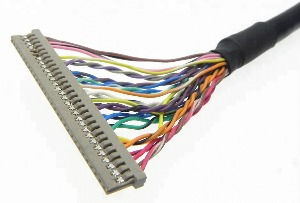
DVI is a preferred choice for lower volume customers in demanding circumstances, particularly if vibrations and shocks can be present, as the DVI interface can be fixed by screws, a feature that a standard HDMI does not provide.
Native video signals are used as input (or input / loop through) to minimize the latency in the video signal. This is beneficial in environments in which an operator is using the video footage for steering "live" time critical robotics.
Touch screen
Naturally, skoopia can accommodate touch screen operation of the DVR. Both pressure based as well as capacitive touch is supported. Default the touch screen is steered via USB. I2C based touch screens are optionally supported. skoopia supports any touch screen by calibrating the touch driver***.
skoopia advises to use pressure based touch systems if outdoor usage in plural circumstances (particularly if usage in wet environments (e.g. rain)) is required.
Capacitive touch is advantageous if water or other liquids hitting the surface can be avoided, as capacitive touch allows for multi-finger gestures (e.g. zoom in/zoom out by bringing two fingers apart / together) and is more accurate. However, if the capacitive touch panel gets wet, operation is cumbersome, if not impossible.
DVR storage:
Intrinsically, any type of storage can be supported. Default skoopia offers storage on hard disk or solid state disk, via the well known SATA power and Sata Data connectors. However, removeable disks are demanded if the video footage needs to be provided to third parties. Here, SD-cards or USB sticks (thumb drives) can be integrated.
Integration to network via e.g. FTP allow integration without physical disks present in the DVR.
For systems that are battery based, having the entire DVR running on SD-card is lower power consumption if compared to Hard disks and/or solid state disks.
Video storage
Video will be compressed using H.265 / H.264 and/or MJPEG, but also audio (e.g. AAC).
Internally, skoopia will use a native file format, that allows for easy search and retrieval
External, AVI or MP4 will be provided so third parties can easily view the video provided.
Custom DVR requirements
Smart integration of camera
Cameras can be controlled using the DVR. Up the coax (control via the video signal cabling) as well as RS485 or RS232 can be supported, for full integration of the camera. Next to functions such as pan/tilt/zoom, also specific functions such as "One Push" white balance of the camera can be steered directly from the DVR.
Smart overlays assisting operator and third party viewer
Comments integrated in the video signal for supporting decision making of third parties (e.g. in pipe inspection, the inspection video comprises comments such as "crack left upper part", easing the retrieval of potential issues that require a decision for repair).
Measurement data that is automatically inserted as an overlay in the video stream (e.g. GPS coordinates, pan/tilt/zoom, distance).
Project identification and description
Warning mesages (e.g. battery has 10%, pressure is dropped below threshold, etc.)
Smart direct operation
Avoiding any mouse operation of the DVR, functions can be assinged to I/O which can be integrated in the DVR.
In basic operation, e.g. Record, Pauze, Stop, Snapshot could be dedicated I/O for easy operation without the need for a keyboard or mouse.
The same can also be done in combination with a keyboard. Then specific keyboard keys can have specific function (e.g. set meter read to zero, open menu, switch resolution of camera).
Fitting dimensions
Specific applications demand a specific size. Contact us if you require a specific form factor.
Connectivity specifics
From wireless support (Wifi, LTE, Blue tooth), but also AHD/SDI via loop through of video signal) to minimize latency or Multi-DVR/Multi-Monitor support
Integration in existing system environment (API, SDK) but also physical connections (e.g. BT1120 connector between DVR board and OEM specific board .
Low Latency Design
Latency in video display is - certainly for operator guided robotics -a no go. Although zero latency is impossible, our experience has shown that for robotics a latency below 100 ms is "not noticed" by humans. 150 ms is workeable, 200 ms is "annoying" and 300 ms is simply unacceptable.
skoopia offers a trade off in DVR pricing versus latency. If low latency is required it will use high performance DSP (digital signal processor) that e.g. could also handle 4K to have a lower latency. Naturally, high performance DSP come with a higher price.
skoopia latency measurements over the entire video chain, i.e. camera, cable, DVR, and output from DVR on screen shows the following results.
skoopia AHD/CVBS recorder (D20AT-1) with skoopia AHD/CVBS camera (21C26AT) displayed on a skoopia HDMI monitor (M215AT) showed the following latency
Video signal Total video chain latency
CVBS 210 ms
AHD 170 ms
Soon to be released DVR with 4K processor chip (calculated results, to be verified)
Video signal Total video chain latency
CVBS 140 ms
EX-SDI 110 ms
AHD 120 ms
Interested in having your custom DVR solution, do not hesitate to contact us: info@skoopia.com.
* NVR = Network Video Recorder. In literature a difference is made between an NVR and a DVR on the base of the video stream that is captured for recording. Whereas a DVR requires the video cameras to be directly connected to it, capturing video streams such as CVBS, AHD, TVI, EX-SDI and/or HD-SDI/3G-SDI, an NVR only requires a network connection and captures video streams coming from IP cameras which intrinsically could be located anywhere.
** skoopia DVR also allows for auto-calibrated positioning of the overlays for the different aspect ratios. Most overlays that are supporting the reporting (e.g. date/time, project name, measurements) are preferably made in the corners of the displayed video. Here, skoopia offers 4:3 overlay positioning (in case 4:3 monitors are used or 4:3 video signal (e.g. CVBS) is used as well as 16:9/16:10 overlay positioning for HD/ Full HD video signals and 16:9/16:10 monitors.
*** Touch screens need calibration in operating systems. Whereas windows on personal computer platform supports all drivers, skoopia prefers to have a single driver for touch screen operating. This allows our system to remain lean. Touch operation depends on the touch screen IC that is used and the dimensions of the touch screen. skoopia can calibrate any touch screen to have a unique driver for your application, while maximizing the performance of the system.


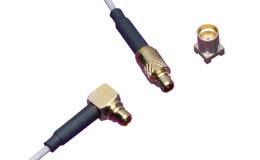

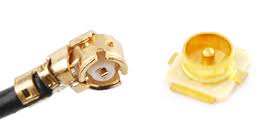

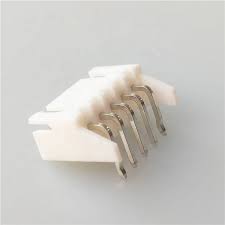

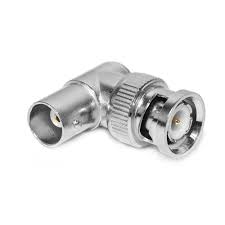

Very interesting article! But you know, if you publish information, I advise you not to forget to support it with a video. You can do all this on various sites or use final cut alternatives. Completely free, simple and yet multifunctional application.